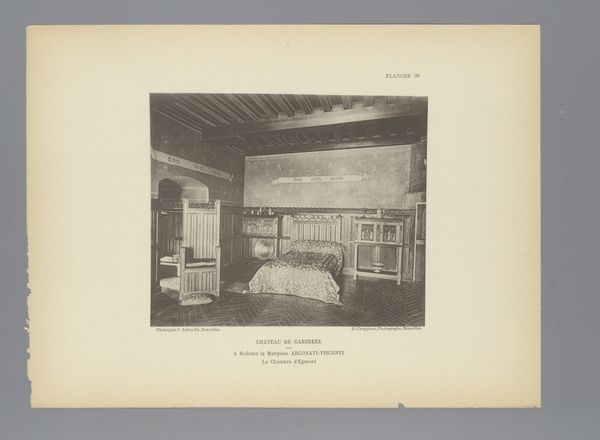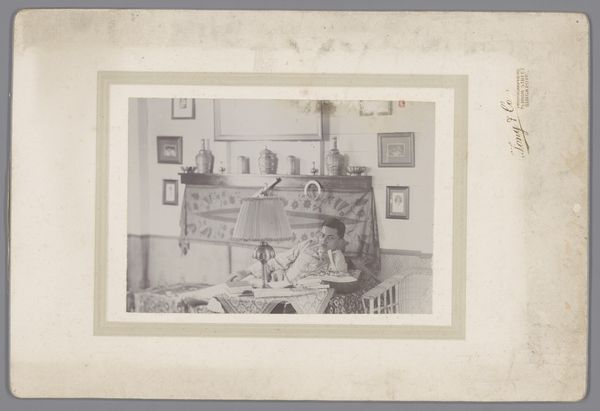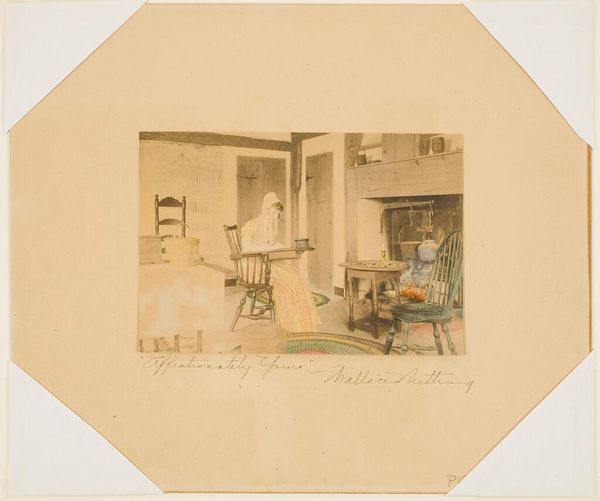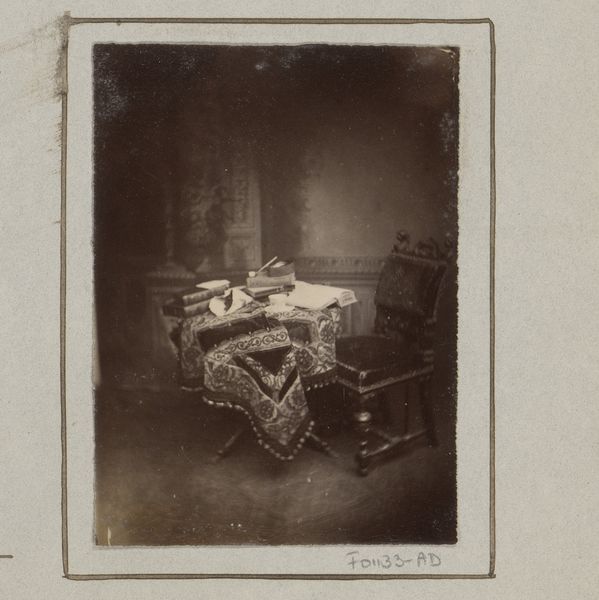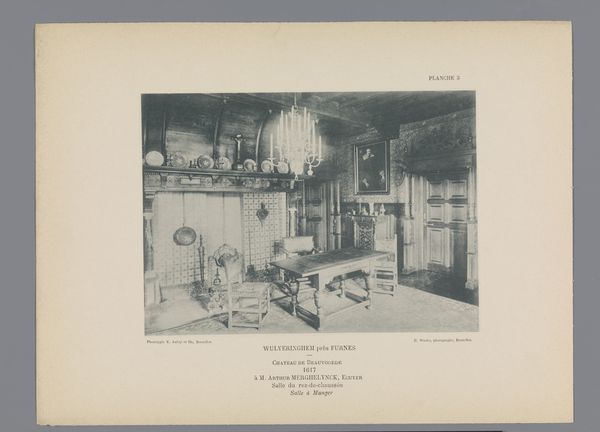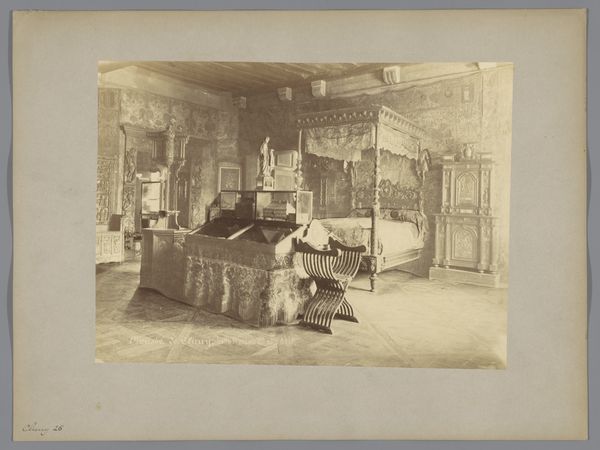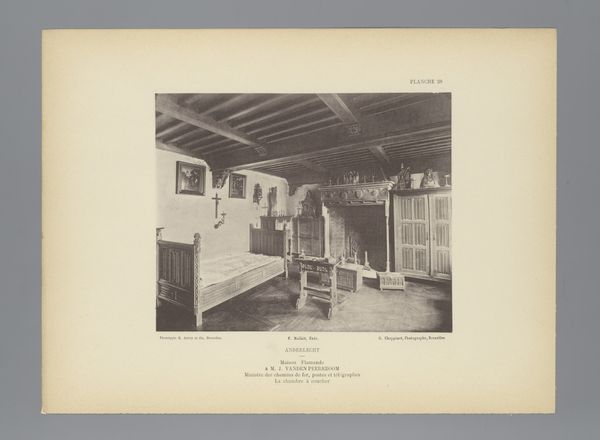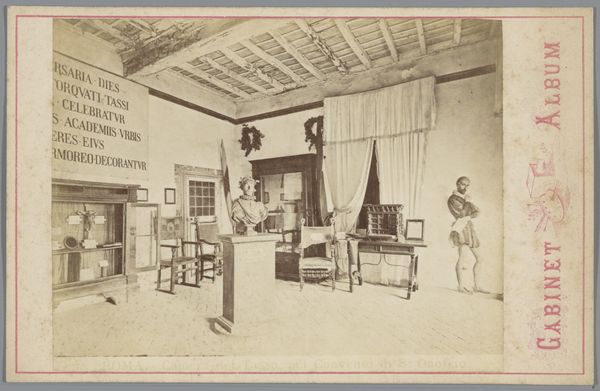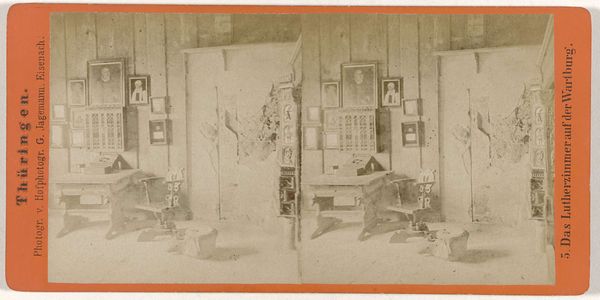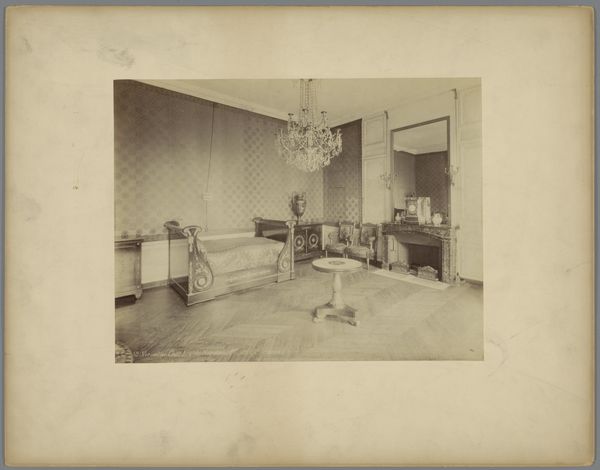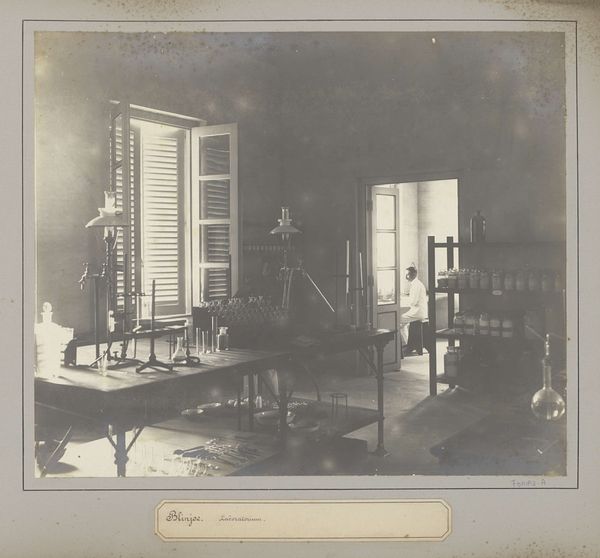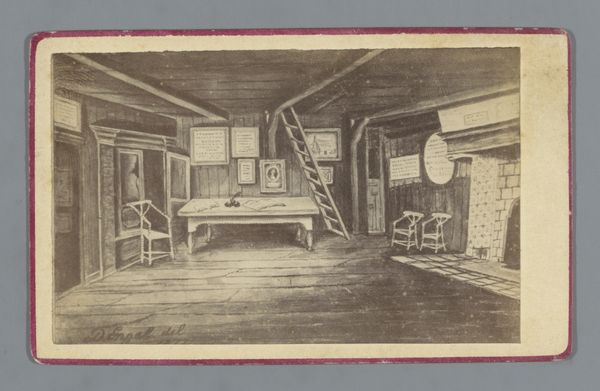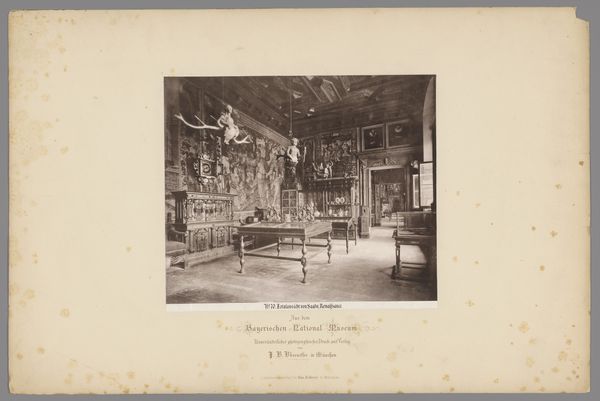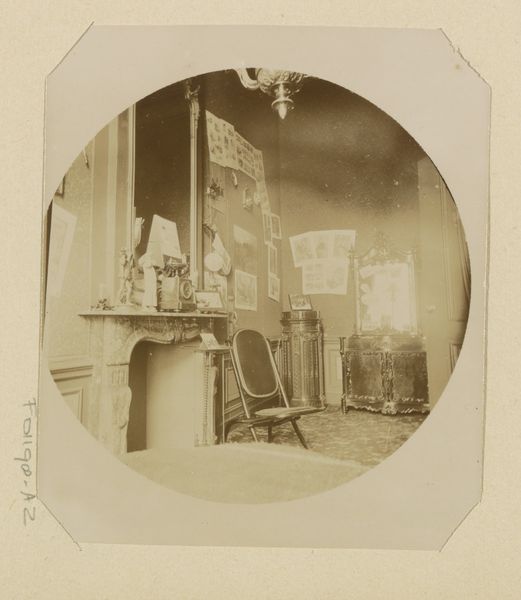
print, photography
#
portrait
# print
#
photography
#
historical photography
Dimensions: height 119 mm, width 168 mm
Copyright: Rijks Museum: Open Domain
Curator: Augusta Curiel's photograph, "Sectie S - Directiekeet (binnenkamer)", likely taken between 1905 and 1910, captures an interior space. My first impression is a sense of faded grandeur, like a stage set waiting for its actors. The light is diffused, the tones muted. It speaks to a bygone era, heavy with untold stories. Editor: And what stories might those be, framed within the social context of early 20th-century Suriname? The photograph documents the “inner chamber” of Section S management, an office or living space associated with governmental artist Jacob Evert Wesenhagen and his family, suggesting a privileged life in colonial society. Consider the portraits atop the piano, most likely family. We see the performance of status through familial representation, a construction carefully posed in parallel with European standards. Curator: Performance is key here! The composition draws the eye across a plane that layers textures and geometry: the hard linearity of the desk against the sinuous curves of the wicker chair; the smooth opacity of the piano against the skeletal wooden architecture. See how the high-contrast division created by that white divider flattens and stretches the picture plane, reinforcing its essentially pictorial and symbolic value? It underscores an acute formal understanding by Curiel. Editor: Yes, but those sharp contrasts—the bright room on the right juxtaposed with the shaded domestic interior on the left—also speak volumes about divisions within Surinamese society at that time. That barrier is both literally dividing space and implicitly separating distinct socioeconomic spheres. It raises uncomfortable questions about who had access to comfort and artistic pursuits, and who didn’t. Curator: It's fascinating that the composition almost segregates the space based on function as well, dividing the business from leisure. Consider that desk again: strewn with papers, poised as the point from which governance extends into every level of a section… what “S” means here would require more archival excavation, though! Editor: Right. A critical excavation that includes asking questions like: what was the relationship between Dutch colonizers and local populations reflected by a single room? How does an artist like Curiel, a woman of Afro-Surinamese descent, navigate portraiture and subject matter during an era of overt racism? Curator: Her engagement with form, that deliberate flattening and juxtaposition, is itself a statement, don't you think? Perhaps we give the work and, by extension, the artist more credit here! Editor: Absolutely. Her presence is significant. That's something this image certainly speaks to—revealing silences of those marginalized. Hopefully such dialogues open ways to amplify such histories in new exciting ways. Curator: Yes! The muted tones, the layered composition; all direct us back into contemplating the enduring echoes of empire through her photographic lens.
Comments
No comments
Be the first to comment and join the conversation on the ultimate creative platform.
